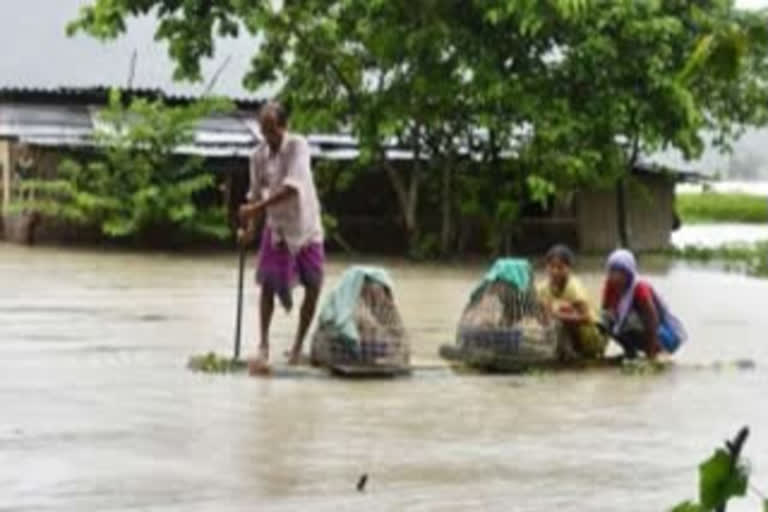New Delhi: Major flood-prone States like Assam, Uttar Pradesh, Bihar, West Bengal, Odisha have not taken the initiative to enact flood plain zoning bill, the Centre said on Wednesday. Assam at present is reeling under perennial flood problem with several villages across the State already inundated making thousands of villagers homeless.
"The States expressed their inability to enact the Act mainly on account of reasons like high population, density, practical difficulties in relocation and rehabilitation, scarcity of land resources in urban areas," a senior government official told ETV Bharat.
Flood plain zoning is a concept central to flood plain management. This concept recognises the basic fact that the flood plain of a river is essentially its domain and any intrusion into or developmental activity therein must recognize the river's 'right of way.' The ministry has been pressing upon the States for the need to adopt flood plain zoning approach. A model draft bill for flood plain zoning legislation was also circulated by the Centre to all States.
"This bill envisages zoning of the flood plain of a river according to flood frequencies and defines the type of use of flood plain. The States of Manipur, Rajasthan and Uttarakhand, erstwhile State of Jammu and Kashmir had enacted legislation. However, delineation and demarcation of flood plains are yet to be undertaken," the official said.
Flood plain zoning measures aim at demarcating zones or areas likely to be affected by floods of different magnitude or frequencies, probability levels and specify the types of permissible development in these zones, so that whenever floods actually occur, damage can be minimized, if not avoided.
Also read: Flood situation worsens in Assam, over 1.33 lakh people affected
Significantly, the Jal Shakti Ministry also identified that encroachment of riverine areas, deforestation and watershed degradation, loss and destruction of wetlands are some of the major reasons that cause perennial floods. "India faces flood almost every year, in various degrees of magnitude. The frequent occurrence of floods can be attributed to various factors, including wide variations in rainfall both in time and space with frequent departures from the normal pattern," an official from the Jal Shakti Ministry said.
High-intensity rainfall in short duration, poor or adequate drainage and channel capacity, high slit load in rivers, unplanned reservoir regulation and snowmelt and glacial lake outbursts cause floods in many parts of the country, Ministry pointed out.
"Today the southern states or the central states have different kinds of problems. Assam, Bihar and UP have different kinds of problems. Assam, UP and Bihar are three states where there are not many dams. The water which comes either from Nepal or from our own territories is uncontrolled whereas the Krishna Basin or any such basin are highly dammed basins, and water is basically unregulated," the official said.
The ministry pointed out that floods occur due to climate change as well. "The overall impact of climate change on water resources is anticipated in terms of rise in extreme events, thereby increasing flood and drought frequency, intensity of rainfall," Ministry said.
Indian Institute of Technology Guwahati is also conducting a study showcasing statistical downscaling for hydro-climate projections with Coupled Model Intercomparison Project Phase 5(CMIP5) simulations to assess the impact of climate change. It may be mentioned here that in order to formulate the strategy for flood management works in the entire country and river management activities and works in the border areas for the period 2020-2023, a committee has been constituted by the government under the leadership of Niti Aayog's vice-chairman.
Officials from different department of the central government, domain experts, principal secretaries from Jammu and Kashmir, Uttar Pradesh, Bihar, West Bengal, Punjab, Assam, Arunachal Pradesh, Tripura, Madhya Pradesh and Kerala have been included as members of the committee.



